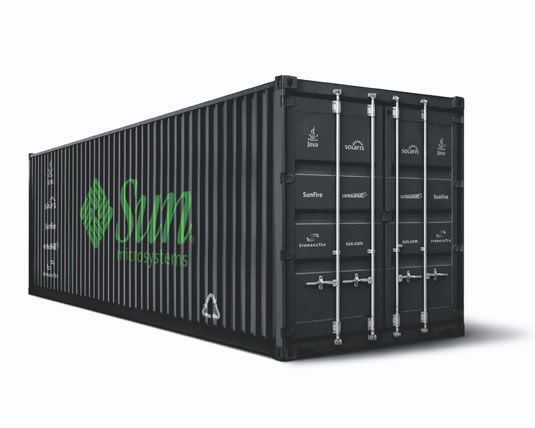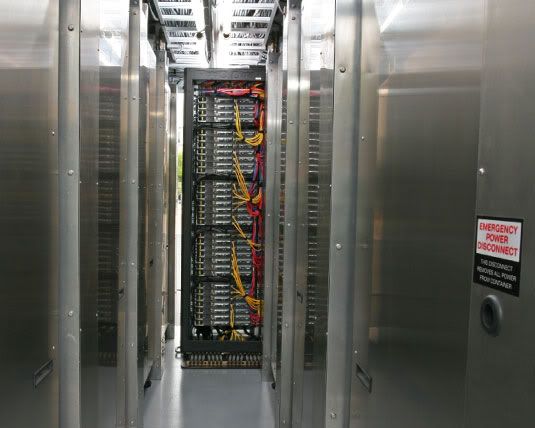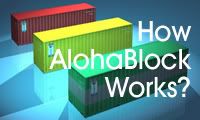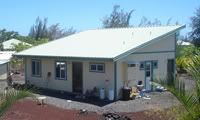
Sun, IBM and now HP offer a data centre in a shipping container. But these are mostly marketing gimmicks. The companies offer to install rack mounted servers, disk drives and cooling in a standard steel 40 foot ISO shipping container. The idea is that this makes it easy for a company to add computing power: just take deliver of the shipping container and plug it in. But apart from the military, who are used to containerized equipment, it is not easy to integrate a truck sized box of electronics into your organization.

 Opening the outer doors reveals an efficient cooling system as well as a main control panel.
Opening the outer doors reveals an efficient cooling system as well as a main control panel.



 Power Distribution & Control Panel inside the Sun MD.
Power Distribution & Control Panel inside the Sun MD.
3. Sun Blackbox
The computer maker can configure the hardware, connect all the cables, close the doors and ship the box to the customer. The customer then just needs to open the doors, plug the box in and switch it on. But in reality, it is not quite this simple:
1. Cooling: Densely packed rack mounted equipment is difficult to keep cool. Placing it in a cramped metal box will make this worse. Rack mounted equipment is usually designed to draw cool in air from the front and exhaust hot air out the back. This assumes there is a isle at the front and back for the air to circulate; a false floor underneath for the cool air to be delivered and space above the cabinets to carry the hot air away. An ISO shipping container is too small to do this in and most of the designs use only one isle down the middle with racks up against the side of the container. Photos of the Sun system show what appear to be very large cooling air ducts coming out of the front, which have to be ducted somewhere. Other units show doors in non standard places and lots of cables coming out of holes in the containers.
2. Maintenance: The isle at the front and back of racks not only allows air to circualte, it also also provides space for maintenance workers to exchange equipment and run cables (there are a lot of cables in a data center). The width of an ISO container only allows for one narrow isle, making maintenance difficult.
3. Delivery: Rack mounted cabinets are designed to fit in the back of a small truck or plane. There are trucks with special suspension designed to carry sensitive computer equipment. Only a few specialist cargo aircraft are large enough to carry an ISO container, so the boxes would have to long distances by sea, road or rail. The sea, road and rail transport systems designed to handle ISO shipping containers are not intended for delicate equipment and do not protect containers from the elements. The data center would need to be very well sealed for transport to prevent water damage and be sturdy enough top prevent damage from vibration, knocks and being tilted. The containers need to have enough room in them for staff to install and maintain the equipment, so about one third to one half of each container is empty, resulting in increased shipping costs.
4. Installation: Rack mounted cabinets are designed to fit trough a space about the size and shape of a standing person, so they can be pushed through a normal doorway and into a passenger lift, using a simple handcart. The equipment is therefore compatible with office buildings. In contrast shipping containers require a very large fork lift truck to move them and will not fit in an ordinary office building. They would need a specially designed warehouse-like building or annex to a building. ISO shipping containers are designed to be weatherproof, but setting up a datacenter outdoors would require all of the conduits to be carefully sealed and make maintenance very difficult, as containments would enter every time a door was opened. There have been many modular building systems based on ISO containers which have failed due to leaks. Having a container crammed with sensitive electrical equipment in a leaky steel box would be disastrous. Also the average corporation does not want to have something which looks like a container wharf or an electricity substation, next to their office building. The plan for a major data center in Canberra is in jeopardy due to opposition to the collocated power station. A containerized data center is likely to draw planning objections.
5. Safety: Data center equipment is designed to be maintained with the power switched on. Staff need to be able to replace one computer in a rack, while the rest of the equipment keeps working. Working in a cramped metal box will be far less safe than a traditional data center. There will be less room for the staff to work and the walls will form one sealed electrically conductive box. Noise from the equipment is likely to be higher than in a normal room. As the box is designed to be sealed, it will need to have vents added to allow for fire fighting. If inert gas firefighting is used, it will be deadlier than in a conventional room and there will be fewer escape exits. Staff may have less than a minute to escape before being killed by the fire suppression system.
Sun Modular Datacenter S20

The Sun Modular Datacenter S20 is the world's first virtualized datacenter built into a shipping container and optimized to deliver extreme energy, space, and performance efficiencies.
 Opening the outer doors reveals an efficient cooling system as well as a main control panel.
Opening the outer doors reveals an efficient cooling system as well as a main control panel. 
The server racks slide out, allowing to maximize space efficiently.

The Sun Modular Datacenter is a computing powerhouse capable of hosting a configuration that would place it among the top 200 fastest supercomputers globally.

Servers mounted behind plexiglass.
 Power Distribution & Control Panel inside the Sun MD.
Power Distribution & Control Panel inside the Sun MD.View its online demo video :












1 Comment
Some comments on your analysis.
Cooling: Densely packed rack mounted equipment is difficult to keep cool - True, regardless of if it is in a container or a brick and mortar data center. The important fundamental is to provide enough flow of air at the right temperature to the air inlet of the equipment. Any vendor (Container or Brick and Mortar) who cannot prove to you how they do this should not be trusted.
An ISO shipping container is too small to do this in ..... Not correct, smaller is actually easier and more efficient since you don't have to push air all over the place. Reference the size of your freezer in your kitchen.
Maintenance - It depends on the type of maintenance you are doing but limited space is a tradeoff you make.
Delivery - The vendor should prove to you that their design is capable of being transported and being able to protect any equipment inside. Any analysis of shipping costs needs to include avoidance of shipping costs associated with thousands of little boxes that all that equipment would have to come it otherwise.
Installation - Containers are not intended to be placed on the 2nd or 3rd floor of your standard type building. Look for a vendor with the correct NEMA enclosure ratings and a "certified" design by ETL or UL or CE or local authority. If your vendor only supports their container being installed indoors then you might want to look at another vendor.
Safety- Again look for a certified design. This is the primary reason not to go off and build your own. Unless you plan to invest the time and money to ensure you are meeting all applicable codes, you will probably miss something and hurt someone. As far as fire suppression, choose a design with a VESDA and correctly configured fire alarm system that give occupants an appropriate amount of time to exit prior to actuation.
Posted on September 9, 2009 at 7:06 AM
Post a Comment